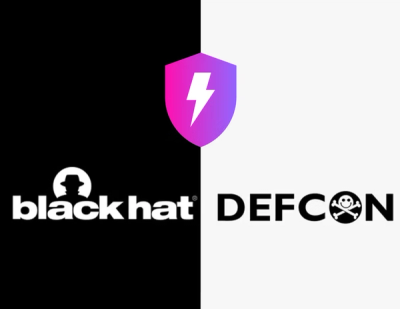
Security News
Meet Socket at Black Hat and DEF CON 2025 in Las Vegas
Meet Socket at Black Hat & DEF CON 2025 for 1:1s, insider security talks at Allegiant Stadium, and a private dinner with top minds in software supply chain security.
DatabaseSchemaReader
Advanced tools
Any ADO provider can be read (SqlServer, SqlServer CE 4, MySQL, SQLite, System.Data.OracleClient, ODP, Devart, PostgreSql, DB2...) into a single standard model.
Supply Chain Security
Vulnerability
Quality
Maintenance
License
A simple, cross-database facade over .Net 2.0 DbProviderFactories to read database metadata.
Any ADO provider can be read (SqlServer, SqlServer CE 4, MySQL, SQLite, System.Data.OracleClient, ODP, Devart, PostgreSql, DB2...) into a single standard model.
Supported databases include SqlServer, SqlServer Ce, Oracle (via Microsoft, ODP and Devart), MySQL, SQLite, Postgresql, DB2, Ingres, VistaDb and Sybase ASE/ASA/UltraLite. For .net Core, we support SqlServer, SqlServer CE 4, SQLite, PostgreSql, MySQL and Oracle (even before the database clients were available in .net Core).
//In .net Core, create the connection with the connection string
using (var connection = new SqlConnection("Data Source=.\SQLEXPRESS;Integrated Security=true;Initial Catalog=Northwind"))
{
var dr = new DatabaseSchemaReader.DatabaseReader(connection);
//Then load the schema (this will take a little time on moderate to large database structures)
var schema = dbReader.ReadAll();
}
To use it simply specify the connection string and ADO provider (eg System.Data,SqlClient or System.Data.OracleClient)
const string providername = "System.Data.SqlClient";
const string connectionString = @"Data Source=.\SQLEXPRESS;Integrated Security=true;Initial Catalog=Northwind";
//Create the database reader object.
var dbReader = new DatabaseReader(connectionString, providername);
//for Oracle, specify the Owner (Schema) as the full schema of an Oracle database is huge and will be very slow to load.
//var dbReader = new DatabaseReader("Data Source=XE;User Id=hr;Password=hr;", "System.Data.OracleClient", "HR");
//load the schema (this will take a little time on moderate to large database structures)
var schema = dbReader.ReadAll();
The DatabaseSchema object has a collection of tables, views, stored procedures, functions, packages and datatypes. Tables and views have columns, with their datatypes.
//first the standard schema reader
const string providername = "System.Data.SqlClient";
const string connectionString = @"Data Source=.\SQLEXPRESS;Integrated Security=true;Initial Catalog=Northwind";
var reader = new DatabaseReader(connectionString, providername);
//for Oracle, specify dbReader.Owner = "MyOwner";
//for .net Core, var reader = new DatabaseReader(new SqlConnection(connectionString));
var schema = reader.ReadAll();
//now write the code
var directory = new DirectoryInfo(Environment.CurrentDirectory);
var settings = new CodeWriterSettings
{
Namespace = "Northwind.Domain",
//CodeTarget = CodeTarget.Poco //default is POCO, or use EF Code First/NHibernate
};
var codeWriter = new CodeWriter(schema, settings);
codeWriter.Execute(directory);
//Simple SQL
var sqlWriter = new SqlWriter(schema.FindTableByName("ORDERS"), SqlType.PostgreSql);
var selectSql = sqlWriter.SelectPageStartToEndRowSql(); //and others...
//Script data INSERTs (not available in .net Core)
var sw = new DatabaseSchemaReader.Data.ScriptWriter {IncludeIdentity = true};
var inserts = sw.ReadTable("ORDERS", connectionString, providername);
You can compare the schemas of two databases to get a diff script.
//load your schemas - nb .net Core requires ADO connection object
var acceptanceDb = new DatabaseReader(connectionString, providername).ReadAll();
var developmentDb = new DatabaseReader(connectionString2, providername).ReadAll();
//compare
var comparison = new CompareSchemas(acceptanceDb, developmentDb);
var script = comparison.Execute(); //script to upgrade acceptanceDb into the same schema as developmentDb.
//create a schema model
var dbSchema = new DatabaseSchema(null, SqlType.Oracle);
var table = dbSchema.AddTable("LOOKUP");
table.AddColumn<int>("Id").AddPrimaryKey().AddColumn<string>("Name").AddLength(30);
var newColumn = table.AddColumn("Updated", DbType.DateTime).AddNullable();
//create a migration generator
var factory = new DatabaseSchemaReader.SqlGen.DdlGeneratorFactory(SqlType.Oracle);
var migrations = factory.MigrationGenerator();
//turn the model into scripts
var tableScript = migrations.AddTable(table);
var columnScript = migrations.AddColumn(table, newColumn);
FAQs
Any ADO provider can be read (SqlServer, SqlServer CE 4, MySQL, SQLite, System.Data.OracleClient, ODP, Devart, PostgreSql, DB2...) into a single standard model.
We found that databaseschemareader demonstrated a healthy version release cadence and project activity because the last version was released less than a year ago. It has 1 open source maintainer collaborating on the project.
Did you know?

Socket for GitHub automatically highlights issues in each pull request and monitors the health of all your open source dependencies. Discover the contents of your packages and block harmful activity before you install or update your dependencies.

Security News
Meet Socket at Black Hat & DEF CON 2025 for 1:1s, insider security talks at Allegiant Stadium, and a private dinner with top minds in software supply chain security.

Security News
CAI is a new open source AI framework that automates penetration testing tasks like scanning and exploitation up to 3,600× faster than humans.

Security News
Deno 2.4 brings back bundling, improves dependency updates and telemetry, and makes the runtime more practical for real-world JavaScript projects.